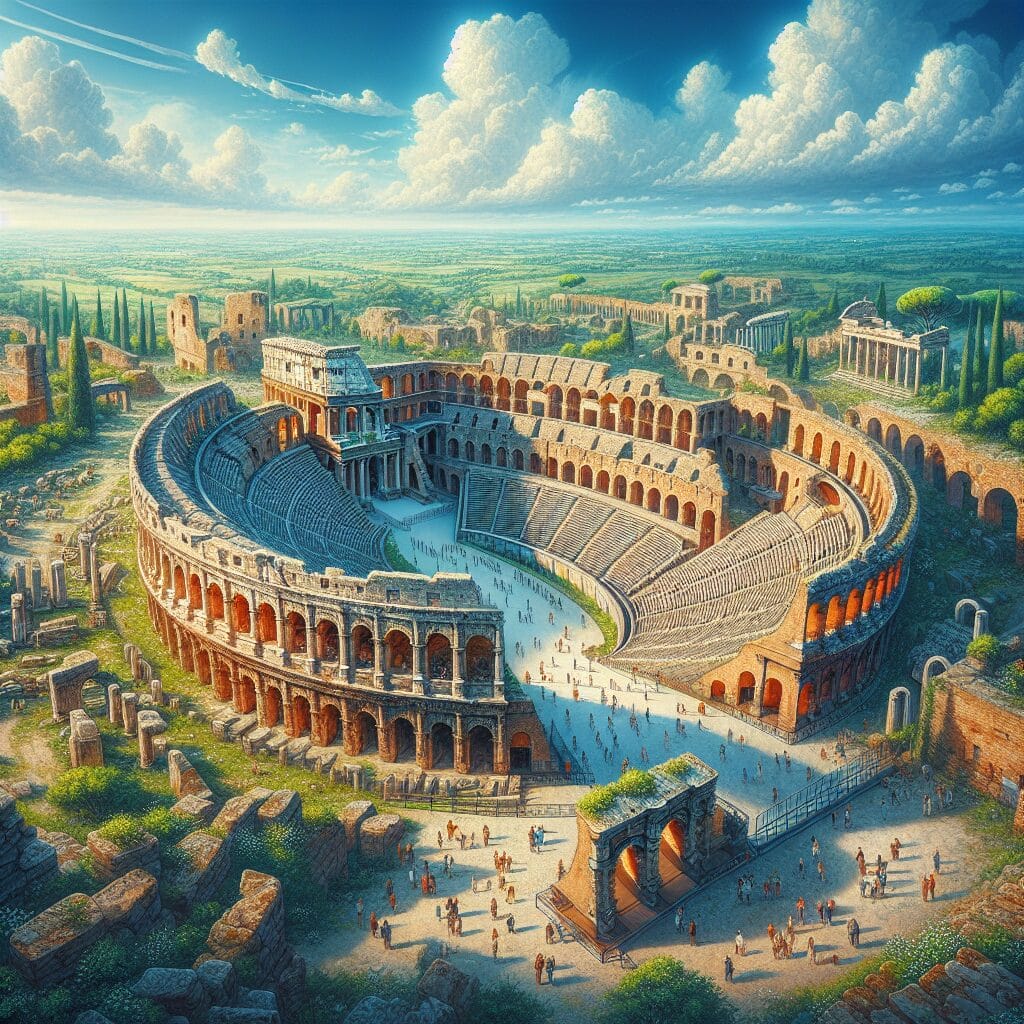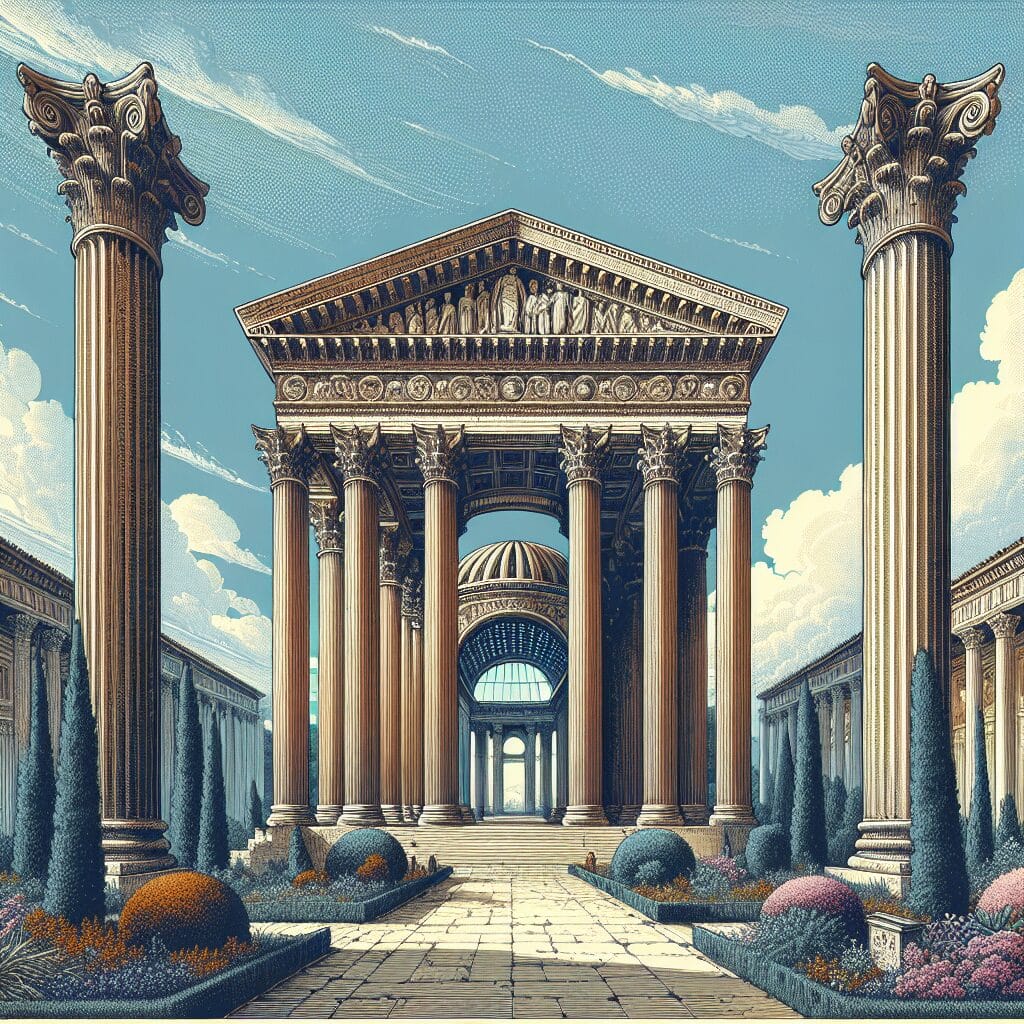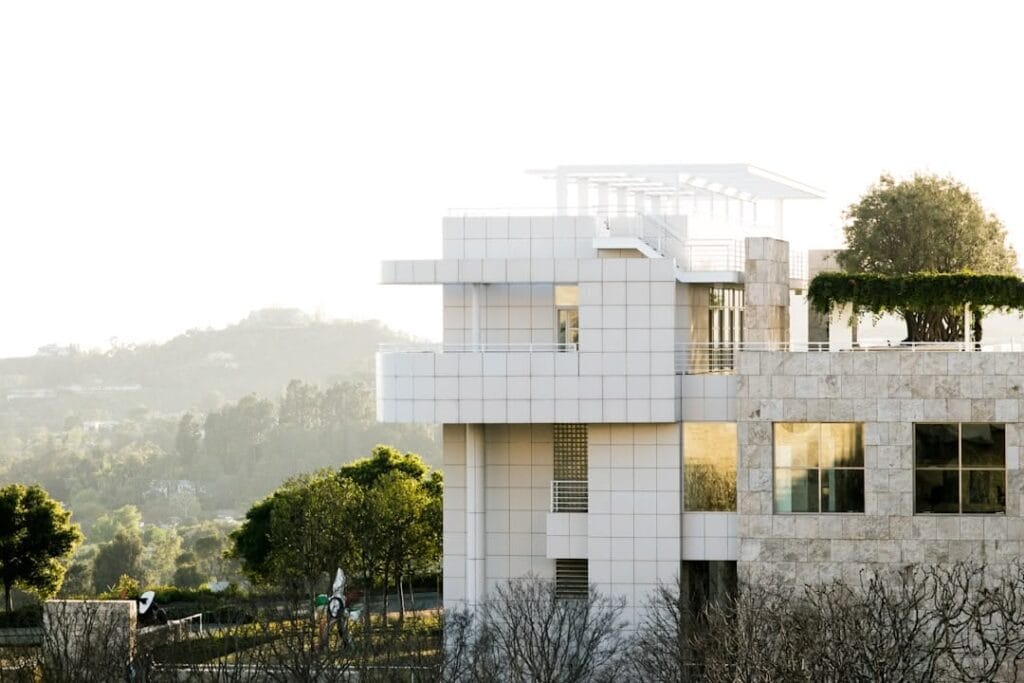Roman architecture played a pivotal role in shaping civic life, influencing social interactions and community structures across the empire. The design and functionality of public spaces such as forums, basilicas, baths, and amphitheaters facilitated gatherings, fostering a sense of community among citizens.
In Roman cities, these spaces were integral to daily life. Forums served as central hubs for political and commercial activities, while basilicas were venues for legal and business transactions. Baths went beyond hygiene, acting as social and cultural centers, and amphitheaters provided entertainment through public spectacles.
These architectural innovations not only enhanced civic engagement but also laid the groundwork for modern public spaces, ensuring the enduring legacy of Roman architectural principles.
The Role of Basilicas
Basilicas in ancient Rome were multifunctional structures, serving as pivotal venues for social and political life. Their spacious interiors facilitated a variety of activities, making them central to Roman civic engagement. Judicial uses were prominent, as many basilicas housed law courts, where legal matters were adjudicated, playing a crucial role in the administration of justice.

Beyond their judicial functions, basilicas also served as bustling centers of commerce. The open spaces within these buildings acted as marketplaces, enabling merchants to trade goods and citizens to conduct business. This economic activity fostered vibrant community interactions, further solidifying the basilica’s status as a social hub.
The architectural design of basilicas was instrumental in supporting their diverse roles. Key features such as the rectangular structure with a main hall flanked by colonnades enhanced their functionality. Additionally, elements like the clerestory provided natural light, and the simplicity of the exterior contrasted with richly ornamented interiors, creating an inviting space for public gatherings. These design elements not only facilitated the varied use of basilicas but also underscored their importance in Roman urban life.
Forums as Community Centers
In the landscape of Roman urban planning, forums stood as the epicenter of civic life, serving as vibrant arenas for political and social exchange. These open spaces were meticulously designed to facilitate public discourse, reflecting the Romans’ commitment to civic engagement. As historian Cicero notably remarked, “The forum is the soul of the city,” underscoring its significance in Roman society.

Forums were integral to the political fabric of Roman cities, hosting a multitude of activities that shaped governance and public policy. They were the primary venues for political assemblies, elections, and public speeches, enabling citizens to participate actively in the democratic process. This political utility was complemented by the forum’s role as a focal point for social interaction, where citizens of all strata congregated for festivals, markets, and public announcements.
Beyond their political and social functions, forums were often adorned with statues and monuments, embodying the cultural and historical identity of the city. This blend of functionality and symbolism made forums indispensable to the Roman urban experience, leaving an enduring legacy on civic architecture.
Bathhouses: Social and Cultural Hubs
The Roman baths were far more than mere facilities for hygiene; they were vibrant centers of social and cultural life. These spaces were integral to community interaction, serving as places where citizens gathered to exchange news, conduct business, and engage in leisurely activities like games and gambling. Such functions positioned the baths as essential hubs of socialization and cultural exchange, reflecting the inclusive nature of Roman society.

Architecturally, Roman bathhouses were feats of innovation, embodying the Vitruvian principles of beauty, solidity, and functionality. The inclusion of the hypocaust system, a pioneering method of underfloor heating, exemplified their advanced engineering. This system, alongside the strategic room configuration featuring the tepidarium, caldarium, and frigidarium, allowed for precise thermal control, enhancing the overall bathing experience.
Beyond their functional and aesthetic appeal, the baths were adorned with mosaics, frescoes, and sculptures, further emphasizing their role as cultural and artistic centers. This blend of social, cultural, and architectural significance highlights the enduring legacy of bathhouses in shaping civic life in ancient Rome.
Amphitheaters and Public Entertainment
In ancient Rome, amphitheaters were pivotal in shaping public entertainment, serving as grand venues for a variety of spectacles. These structures hosted gladiatorial contests, where professionally trained athletes engaged in combat, captivating audiences with their skill and valor. Contrary to popular belief, gladiators rarely fought to the death, gaining fame and fortune when victorious. The events were not only thrilling but played a crucial role in reinforcing social hierarchies and political power.

Additionally, amphitheaters featured venationes, showcasing exotic animal hunts, and public executions that served as stark reminders of state authority. These spectacles were free to the public, fostering the glory of Rome and the prestige of its elite sponsors. The significance of these events extended beyond entertainment; they were tools of political propaganda and social cohesion.
The table below highlights some iconic Roman amphitheaters:
| Amphitheater | Location | Notable Features |
|---|---|---|
| Colosseum | Rome | Largest amphitheater, iconic gladiatorial games |
| Amphitheater of Pompeii | Pompeii | Oldest surviving Roman amphitheater |
| Amphitheater of Capua | Santa Maria Capua Vetere | Training site for gladiators |
Despite their decline with the fall of the Roman Empire, these architectural marvels continue to symbolize the grandeur and complex social fabric of Roman civic life.
Architectural Innovations
Roman architecture is renowned for its innovations that significantly enhanced both the functionality and aesthetic appeal of public spaces. A pivotal advancement was the mastery of vaulted ceilings, which leveraged the strength of arches in three dimensions. This technique allowed for the construction of expansive interiors, such as the throne room in Diocletian’s palace, which boasted a 100-foot-wide vaulted roof, eliminating the need for internal supports and creating vast open spaces.

Another remarkable innovation was the use of domes. By employing circular geometry, Romans could cover large areas without internal supports, as exemplified by the Pantheon’s immense concrete dome. These structural elements not only provided practical benefits, such as increased interior space and improved acoustics, but also added to the grandeur of public buildings, transforming them into awe-inspiring venues.
Furthermore, the adoption of columns from Greek architecture, along with the development of durable construction materials like concrete, allowed the Romans to create buildings that were both visually striking and enduring. These innovations not only underscored the architectural prowess of the Romans but also laid the foundation for modern civic architecture, influencing the design of contemporary spaces.
The Baths of Caracalla
The Baths of Caracalla stand as a monumental testament to the grandeur of Roman architectural innovation and its influence on civic life. Constructed between AD 212 and 216 during the reign of Emperor Caracalla, these baths were among the largest and most opulent of their time, covering approximately 27 acres. Designed to accommodate up to 1,600 bathers, the complex was a hub of social and cultural interaction, offering more than just bathing facilities.

Architectural innovations played a pivotal role in the baths’ design. The complex featured expansive vaulted ceilings, a hallmark of Roman engineering that created vast, open spaces without internal supports. This allowed for the inclusion of various amenities such as libraries, gardens, and exercise rooms, transforming the baths into a multifaceted public venue. The use of advanced materials like concrete further enhanced the durability and grandeur of the structure, ensuring its lasting impact on Roman society and architecture.
Beyond their immediate functionality, the Baths of Caracalla embodied a blend of leisure, luxury, and civic pride, serving as a prototype for modern recreational facilities. Their historical significance and architectural brilliance continue to inspire contemporary civic architecture, illustrating the enduring legacy of Roman design principles.
Trajan’s Forum
Trajan’s Forum stands as one of the most significant examples of Roman architectural ingenuity, reflecting the empire’s commitment to civic grandeur. Constructed under Emperor Trajan between AD 107 and 113, the forum served as a multifaceted public space designed to demonstrate economic prosperity and imperial power. It was a central hub for political, social, and economic activities, illustrating the forum’s essential role in Roman society.
The architectural highlights of Trajan’s Forum are numerous, with the Column of Trajan being one of its most iconic features. This majestic column, adorned with intricate reliefs depicting Trajan’s victories in the Dacian Wars, not only celebrated military triumphs but also served as a commemorative monument. Another key feature was the Basilica Ulpia, a grand basilica with vast interior spaces facilitated by the use of vaulted ceilings and columns, showcasing the Romans’ mastery of architectural innovation.
Overall, Trajan’s Forum exemplifies the fusion of functionality and aesthetic appeal, creating a lasting impact on civic architecture. Its design elements continue to inspire modern urban planning and architectural practices, emphasizing the enduring legacy of Roman innovation.
Influence on Modern Civic Architecture
The enduring legacy of Roman architecture is vividly reflected in contemporary civic buildings, where elements like columns, domes, and arches have become synonymous with grandeur and sophistication. These features, initially perfected by Roman architects, continue to shape the design of modern town halls and sports arenas, creating spaces that resonate with historical significance while serving present-day functions.

Town halls around the world often incorporate Roman columns and arches, projecting authority and stability much like the White House and Federal Hall in the United States. Similarly, sports arenas embrace Roman amphitheater designs, providing expansive interiors that facilitate large public gatherings.
“The integration of Roman architectural principles into modern buildings not only enhances their visual impact but also connects contemporary society to its historical roots.”
This architectural tradition underscores a timeless aesthetic that continues to influence urban planning and design. By borrowing from Roman innovation, contemporary civic architecture not only pays homage to the past but also ensures these spaces remain functional and relevant in today’s urban landscapes.
Modern Examples of Roman Influence
The enduring legacy of Roman architecture is prominently visible in contemporary civic buildings, where elements like columns, domes, and arches are frequently employed to convey grandeur and sophistication. These architectural features, perfected by Romans, have been seamlessly integrated into modern structures worldwide, enhancing their visual appeal and functionality.
One notable example is the White House in the United States, which prominently features Roman arches and columns, reflecting the architectural style’s emphasis on authority and stability. Similarly, Union Station in Washington D.C. incorporates Roman arches, initially developed by the Greeks but perfected by Romans, showcasing their versatility in modern civic spaces.
The Jefferson Memorial further exemplifies Roman influence with its majestic porticos and domed roof, emphasizing the timeless appeal of Roman aesthetics. Such integration not only enhances the visual impact of these buildings but also connects modern society to its historical roots, underscoring the enduring legacy of Roman innovation in architecture.
Conclusion
Throughout history, Roman architecture has profoundly influenced civic life, shaping public spaces that fostered social interaction and community engagement in ancient Rome. Structures such as basilicas, forums, baths, and amphitheaters were not only centers of activity but also masterpieces of architectural innovation, featuring elements like vaulted ceilings and expansive interiors.
These innovations continue to resonate in modern civic architecture, where Roman principles are evident in town halls and sports arenas worldwide. The enduring legacy of Roman design is seen in the use of columns, arches, and domes, which convey grandeur and sophistication in contemporary structures like the White House and Jefferson Memorial. As these ancient principles continue to shape modern public spaces, they connect us to a rich architectural heritage, underscoring the timeless impact of Roman innovations.
Frequently Asked Questions
- What are the key features of Roman architecture? Roman architecture is renowned for its use of arches, domes, and columns. These elements are widely adopted in modern civic buildings to convey grandeur and sophistication.
- How did Roman architecture influence modern public spaces? Roman architectural principles have profoundly influenced modern public spaces such as town halls and sports arenas. They integrate elements like columns and arches to enhance visual impact and connect modern society to its historical roots.
- What innovations did Romans introduce in building materials? Roman architects introduced concrete, revolutionizing building practices by offering a stronger and more versatile material than marble. This innovation allowed for more complex and varied architectural designs.
- Can you provide examples of Roman influence in modern architecture? Many iconic structures, like the White House and Jefferson Memorial, exemplify Roman influence. These buildings showcase the enduring legacy of Roman architectural principles in contemporary design.
- What role did Roman architecture play in infrastructure development? Roman innovations in infrastructure, such as road systems, bridges, and aqueducts, laid the groundwork for modern infrastructure, facilitating city connectivity and movement.

